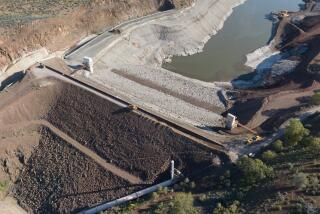Dam Disaster Article Sparks Memories
- Share via
* The article by Christina Lima, “Disaster Revisited,” regarding the St. Francis Dam disaster that occurred at midnight, March 12, 1928, brings back many memories to me. I am a 79-year-old civil engineer with more than 50 years experience in the design of dams and appurtenant structures.
At the time of the failure of the St. Francis Dam, William Mulholland had been involved in the construction of about 20 successful dams. However, a batting average of 1 strikeout in 20 is not very good for dams involving the safety of the public. The St. Francis Dam in the eyes of the dam engineering profession has always been considered example No. 1 of how to go about causing a disaster.
As an expert witness once in a case involving a collapsed tunnel, I was asked how civil engineers make decisions involving structures affecting the safety of the public. I replied facetiously, but with truth:
“You need an engineer older than 60 years. And to advise him, you need a geologist older than the engineer. And, finally a hydrologist older than the geologist, preferably one who is familiar with the once-in-100-year flood firsthand.”
Mulholland qualified with the age factor, but flunked on the last two. Also, Mulholland had a dam design and construction philosophy that ignored known design features. His philosophy was more on the lines of expose the foundation and as soon as possible start placing the concrete with no interference from the “gingerbread details” of refined design.
Mulholland’s mass concrete dams cracked randomly across the face and were caulked with oakum. These cracks proved to be not benign when the dam was subjected to unforeseen stresses.
CLARENCE N. FREEMAN
Fillmore
More to Read
Sign up for Essential California
The most important California stories and recommendations in your inbox every morning.
You may occasionally receive promotional content from the Los Angeles Times.













